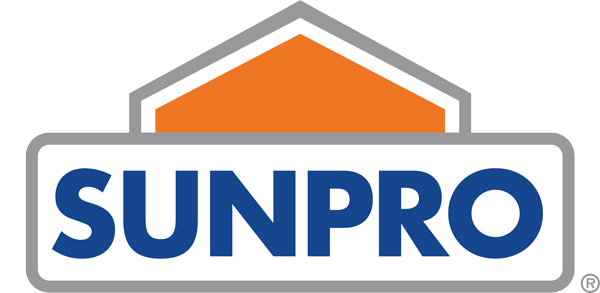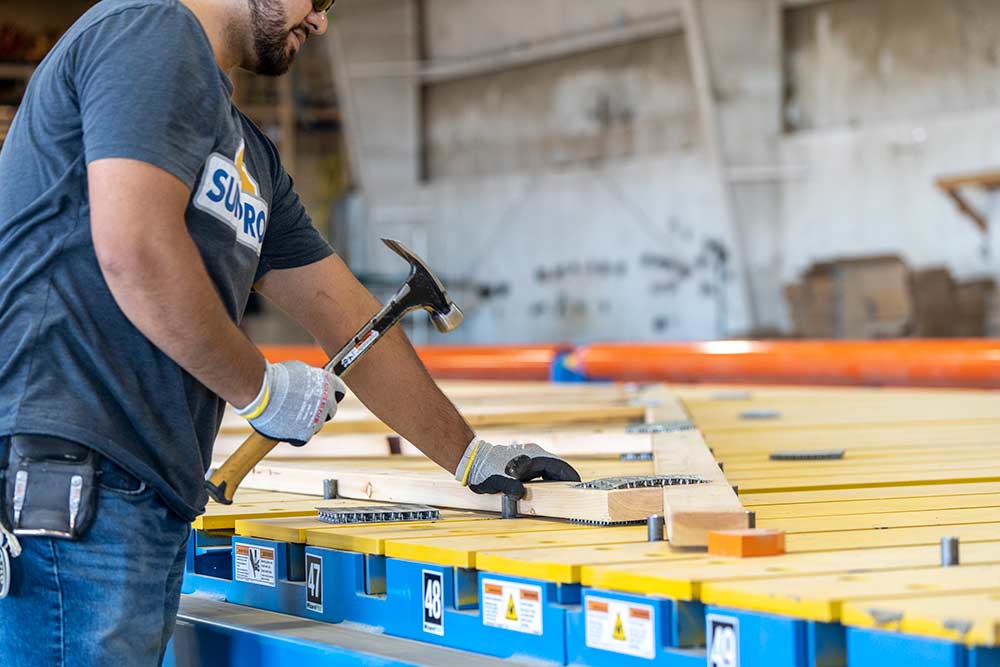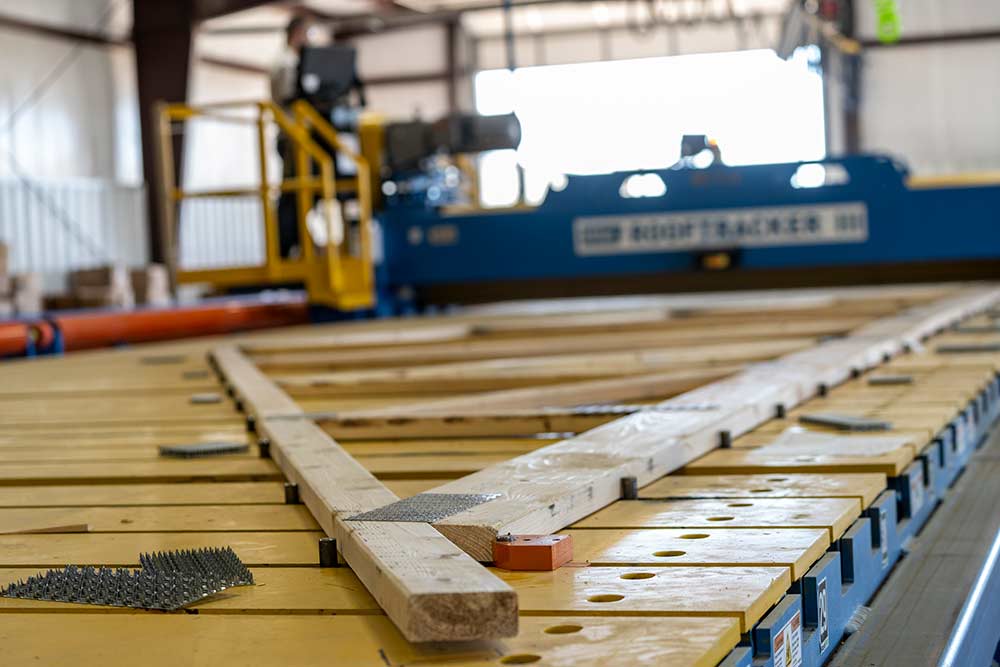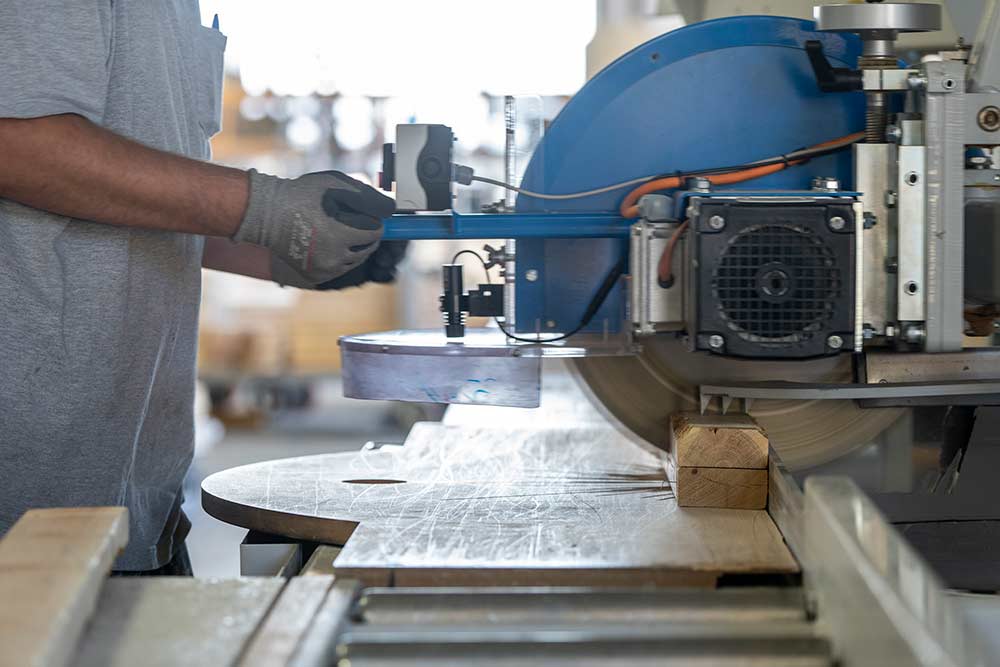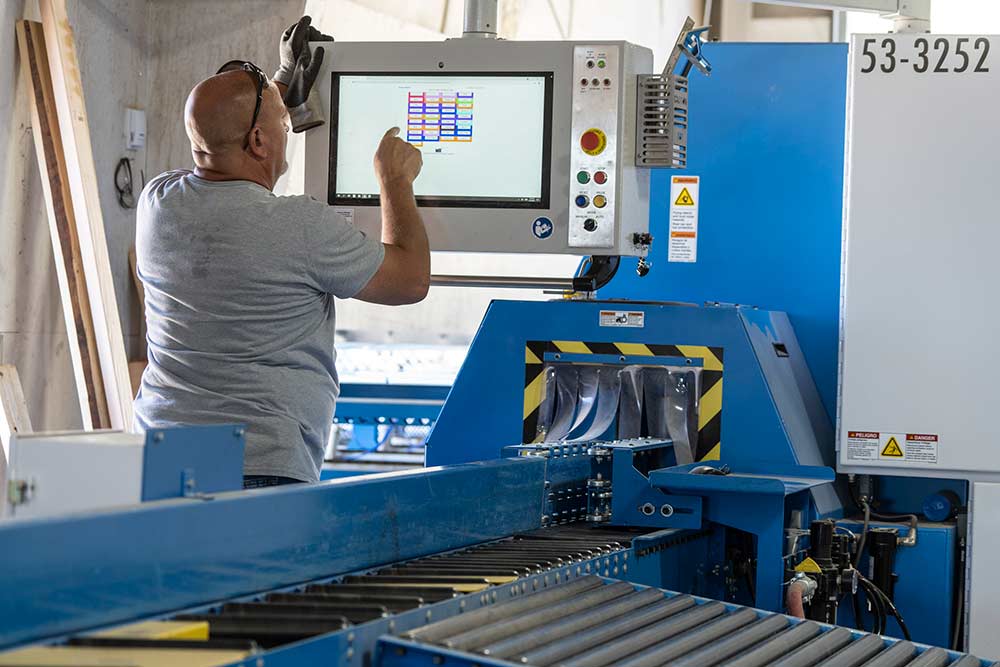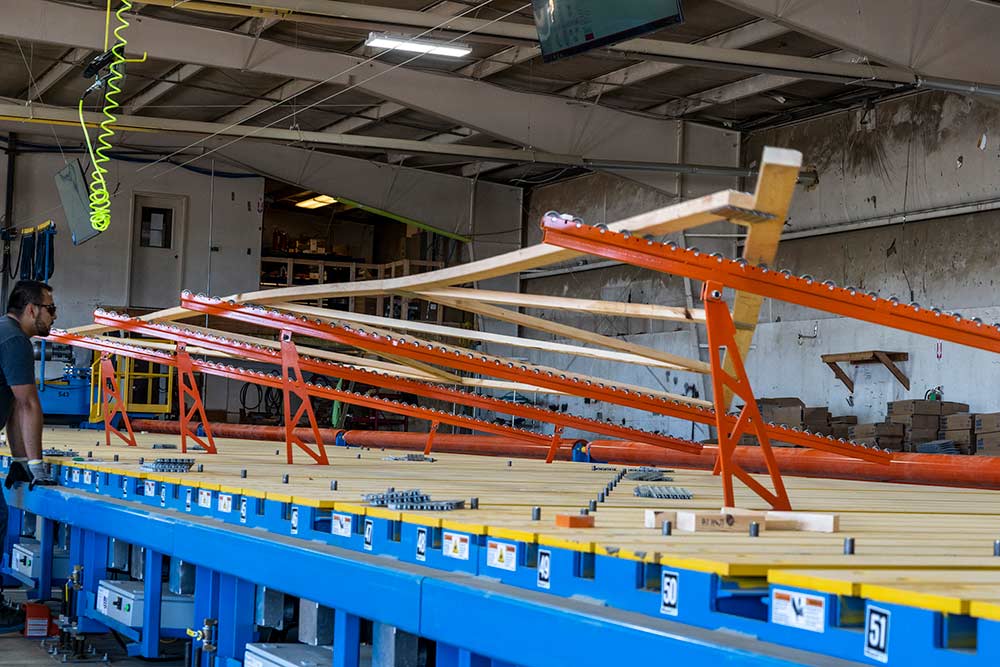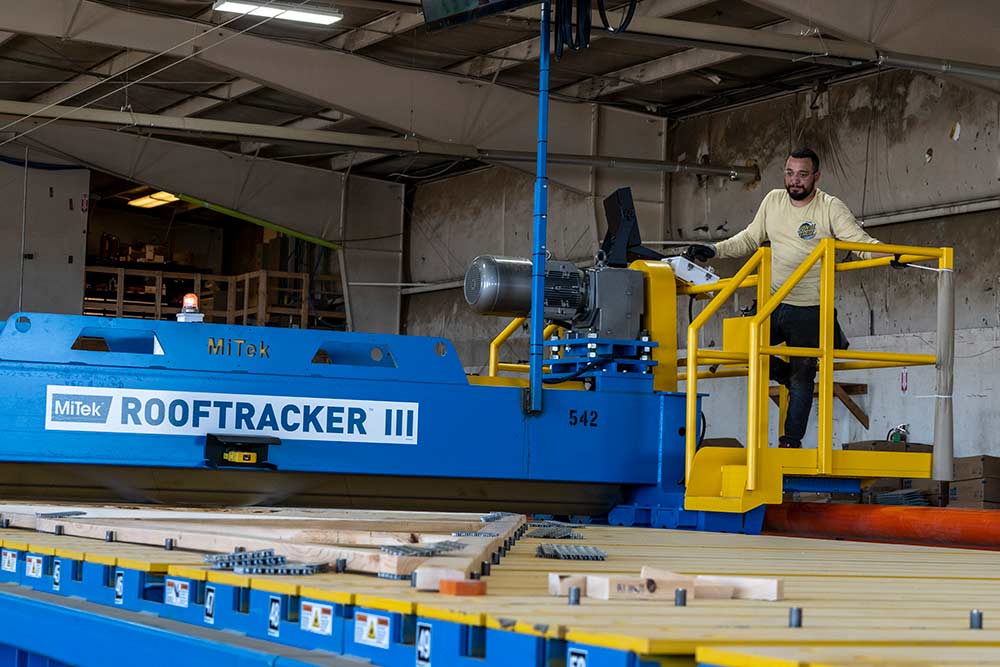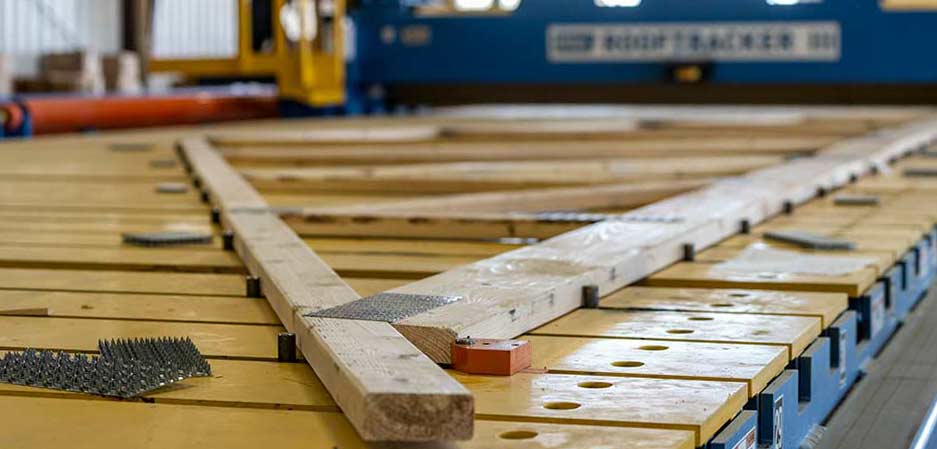
In a climate of rising materials prices and labor shortages, Sunpro’s Willard truss plant has found a way to continue to serve their existing customers while making room for new ones. They recently took on a major renovation to their truss manufacturing operation that will allow them to increase production, which means more trusses delivered on time to more jobs.
“This project will increase our Willard production by upwards of 40%,” says Sunpro division manager Steven Broadbent. “It will allow us to service our current truss customers better and also expand our customer base to include customers currently being serviced by Sunpro’s other core product groups such as lumber, doors, and millwork that we have been unable to serve due to capacity restraints.”
Sunpro has been forward thinking and proactive in their approach to the booming truss industry. They are always looking at what’s next, and in this case, what was next was automation. In a market without enough production capacity to service everyone who needs their products, Sunpro decided to incorporate more automation into their production to do more with the limited labor currently available. They did this by replacing their dated, manual equipment with automation that moves faster, requires less handling, and needs less training time for production workers.
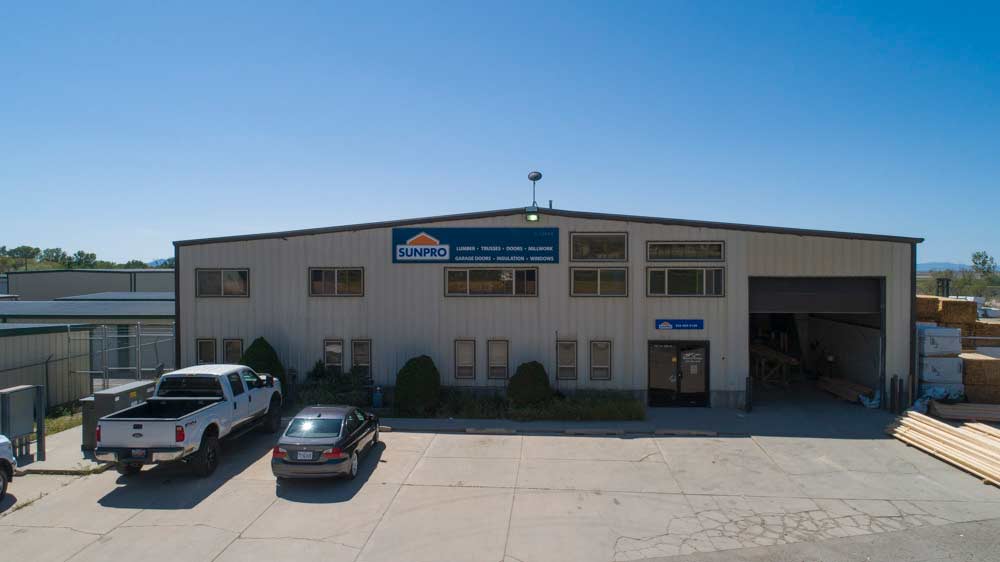
At the start of the process, engineered truss designs are batch processed to an automated saw where various grades of lumber are loaded, and each truss member is precision cut. Each truss package is customized based on the project. As the lumber moves through the saw, the saw prints important assembling information on each member. This makes constructing the truss faster, easier, and more accurate.
Once the wood is cut, it is loaded onto the table where automated jigs allow the truss to be assembled quickly by skilled laborers. The truss is held together by square metal plates that are hammered on the joints of the truss members to create one solid structure. After assembly, a large roller gantry presses the plates into the joint to set the plate. Once the gantry press has set the plate, the truss is then conveyed through a finish press where the metal plates are securely embedded into the truss. The truss is then removed and stacked for transportation to the job site.
Automation in the cutting process, automated jigging in the assembly process, as well as improvements to motorized conveyors throughout the process speeds up production and reduces the overall amount of labor needed. For example, the automated jigging improvements reduce what was a 20-25 minute set up by an experienced builder to roughly 45 seconds without significant training. Not only does this create an incredibly fast production process, but it also allows new trainees to get up to speed in less time and get on to the work of producing trusses.
Producing high quality trusses and delivering them to customers when they need them is the top priority for Sunpro truss location manager, Zach Stanley. When asked how he makes that happen, Stanley points to his employees.
“What makes Sunpro great is the people,” says Stanley. “At the end of the day we’re talking about lumber, truss, millwork, insulation, garage doors, etc., but it’s the people who make sure the job gets done right.”
